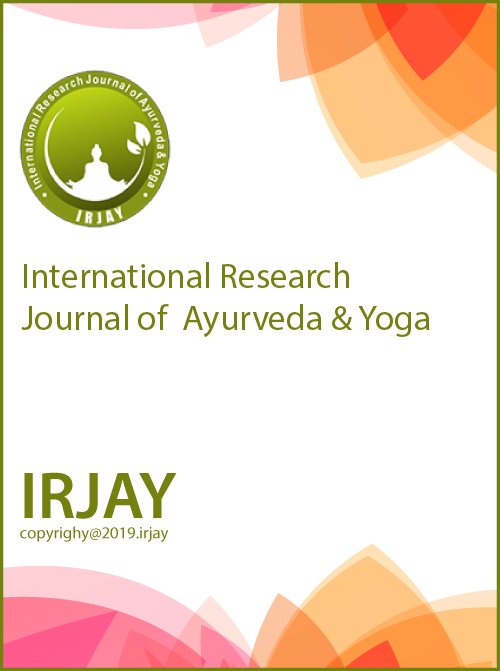A Case Study: Ayurvedic Management of Nasarsha w.s.r to Nasal Polyp
DOI:
https://doi.org/10.48165/RJAY.2023.6203Keywords:
Ksharakarma, Rasayana, Nasaarsha, Nasal PolypAbstract
Nasa is the most important organ of Urdhwajatrugatabhaga and is the gateway for head as well as respiratory system. Nasarshas is one among the thirty-one Nasagata Rogas mentioned in our classics. Nasarshas can be correlated to nasal polyps. Nasal polyps are non-neoplastic masses of nasal or sinus mucosa. Prolonged use of antihistamines and antibiotics leads to drug resistance and decreases immunity, Fear of surgery, its complications and cost have restricted many patients from undergoing surgery and allopathic medicines. In this study a case of 31years male Patient presented with difficulty in nasal breathing, mouth breathing especially at night, sneezing, nasal discharge, headache since 9 months was taken for study. Present case study is taken to evaluate the efficacy of Ksharakarma in the management of Nasarshas w.s.r to Nasal Polyp along with internal medications for improve immunity and to reduce its recurrence. Kshara is an excellent medicine in the management of Arsha, as it has Lekhana, Tridoshaghna, Teekshna and Ushna properties. Shirovirechana being one of the Shodhana Karma, hence Nasya with Apamarga Kshara Taila followed by Yava kshara prathisarana was planned. Internally, Chitrakadi Vati, Triphala Guggulu and Haridra khanda, Hamsapadi Kashaya was prescribed. There was significant improvement in patient’s complaints and marked reduction in polypoidal mass.
Downloads
References
The Epidemiology and Clinical aspect of nasal polyps https://www.ncbi.nlm.nih.gov/PMC 3846212 10/11/22 . 2. Nasal polyps, epidemiology/pathology/treatment. https://www.journals.sagepub.com by GA setti pane - 1987.10/11/22
Sharma A.R Sushruta Samhita Uttartantra, Chap -22, ckaukhambha surbharati prakashan Varanasi - 2001.pp.170.
Sharma A.R Sushruta Samhita Uttartantra, Chap -22, ckaukhambha surbharati prakashan Varanasi - 2001.pp.164.
Kushwaha H.C, Charaka Samhita second part , Chikitsa sthana chaukhambha Orientalia, Varanasi-2012.pp.341. 6. Moreshwar A, Acharya Laghu Vagbhata, Ashtanga
Hridayam, Sarvaanga Sundara & Ayurveda Raasayana Commentry, Edited by Bhishagacharya Harishastri Paradakarya Vaidya, Chaukhambha Publications, 10th Edition, 2011, 287p.
Shastry AD, Bhaishajya Ratnavali, Vidyotini Commentry Edited by Shri Rajeshwardatta Shastri, Chaukhambha Publications, 2019.pp.979
Chunekar K, Acharya Bhavamishra, Bhavaprakasha
Nighantu,Hindi translation Poorva Khanda, Mishraprakarana, Harithakyadi Varga,Shloka no-252-254. Chaukhambha Publications, 2019
Chunekar K, Acharya Bhavamishra, Bhavaprakasha Nighantu,Hindi translation Poorva Khanda, Mishraprakarana, Harithakyadi Varga,Shloka no-252-254. Chaukhambha Publications, 2019
Rao K.L, Pandit Sharangdharacharya, Sharangadhara Samhita, Adhamalla Deepika & Gudartha Deepika commentaries,2009.

